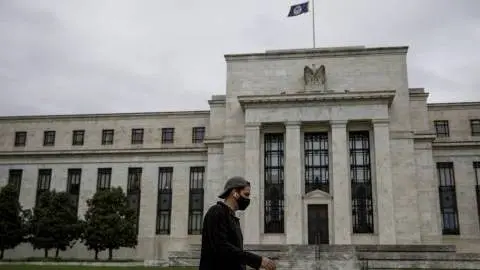Our guide to central banks and the race to hike rates
Several central banks have taken a decidedly more hawkish stance over the past couple of months. Our economists look at what's likely to come next
Our central bank forecasts
US Federal Reserve
Hawkish commentary from Fed Chair Jerome Powell following the January FOMC meeting suggests the central bank means business. With inflation at 7% and the labour market tightening far more quickly than officials expected, he didn’t rule out raising rates at every FOMC meeting this year, arguing they have plenty of room to do so without hurting the jobs market.
The market is even pricing a chance of a 50bp move, although we don’t think this is likely given the Omicron wave has heavily dampened activity and job creation at the start of 2022. Instead, they are set to raise rates 25bp at consecutive meetings in March, May and June, with a further two hikes in the second half of the year. They will also start running down their balance sheet (Quantitative Tightening) from 3Q and this is likely to do a lot of the heavy lifting for policy tightening. This means the eventual peak in the Fed funds target rate is likely to be closer to 2% than 3%.
European Central Bank
Even if headline inflation stays at elevated levels for longer than expected, we see the ECB in no position to consider hiking interest rates any time soon. The drivers behind high inflation and higher inflation projections are still mainly driven by supply-side constraints and not by demand. In other words, tightening monetary policy would do little to ship containers faster from Asia to Europe or reduce energy prices. Consequently, the ECB needs to make a fine distinction between a dropping necessity to continue stimulating the economy and actually bringing higher inflation down.
With high inflation and inflation projections surrounded by high uncertainty, the eurozone economy back at its pre-crisis level, and labour shortages soon leading to higher wages, we expect the ECB to accelerate tapering and eventually stop net asset purchases in September, keeping the door open for a rate hike, possibly even before the end of this year.
Bank of England
The Bank of England has increased interest rates for the second consecutive meeting, amid ongoing concern about high headline inflation rates. In fact four-out-of-nine policymakers voted for an even faster, 50bp hike.
Clearly the Bank is keen to act pre-emptively, with inflation set to remain well above target this year. We expect another rate rise in March and May. The fact that the Bank has now begun quantitative tightening is unlikely to alter that timeline all that much.
However, if our rate hike forecast is roughly accurate, the BoE will also 'consider' actively selling gilts back to the market – and this could come before the summer. This is a process fraught with challenges, and we suspect if the Bank does ultimately do this, it will be in fairly low volumes. Nevertheless, this is uncharted territory, and we suspect at this point the Bank may pause on rate hikes to gauge the impact. We also suspect that by later this year, some of the current inflation concerns will have eased. That suggests the five hikes markets are pricing this year may well prove to be an overestimate.
Download
Download article
4 February 2022
ING Monthly: The masks, and the gloves, are coming off This bundle contains {bundle_entries}{/bundle_entries} articlesThis publication has been prepared by ING solely for information purposes irrespective of a particular user's means, financial situation or investment objectives. The information does not constitute investment recommendation, and nor is it investment, legal or tax advice or an offer or solicitation to purchase or sell any financial instrument. Read more



